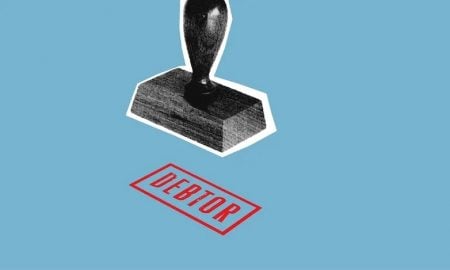
Understanding Mortgage Terms Before Buying a Home – Part I

Do people in the mortgage industry speak another language? Yes-they are. Buying a home with a mortgage loan is challenging if you remain unfamiliar with some common terms used in real estate deals. However, if prepared with a basic understanding of terms you may need, allows you to move quickly and be more competitive. It’s now a seller’s real estate market with sellers all over the country securing multiple offers in a short period of time, with many houses being sold much above the asking price. Some common mortgage glossary terms used are:

Source: Pexels
Mortgage is a loan using your home as collateral if payments are not made in time. Terms determine monthly payment amounts with 10, 15, 20, 25, and 30-year terms. Borrowers unable to repay mortgage instalments, results in the lender taking possession of property. Amortization is the process of calculation of loan repayments for a specified period. A 30-year fixed-rate mortgage, has 360 monthly instalments for full loan repayment.
Mortgage Insurance adds to loan costs for borrowers purchasing homes with less than 20% as down payment and protects the lender when a borrower stops mortgage payments. Borrower should save for larger down payments to avoid this cost.
Mortgage Refinance happens when the balance of your existing mortgage has been paid off and replaced by a different mortgage loan. This rate-and-term re-finance, changes monthly payments by moving to different loan term, loan amount or interest rate.
Fixed-Rate Mortgages assure non-varying interest rates over the loan period. While property taxes and homeowner insurance changes annually, the loan principal and interest remain constant, unless the loan is repaid or refinanced. Adjustable Rate Mortgage occurs when interest rates and payment amounts are re-set after specified periods with better rates compared to fixed-rate mortgages. Borrowers must consider affordability of increased payment amounts if they neither refinance nor sell the home.

Source: Pexels
Subprime Mortgages are for borrowers with a high debt-to-income ratio (DTI) or low credit scores due to collections, bankruptcies, or late payments. These borrowers are high- risk, so subprime mortgages have higher fees and interest rates.
Annual Percentage Rate (APR) on a mortgage loan must be disclosed to borrowers for total borrowing costs with all fees for the loan and is essentially interest rate plus fees charged.
Credit Score determines your ability to repay loans. Lenders utilize credit scores to determine if you qualify for a loan and the amount to be charged. The three-digit scores are from major credit bureaus: Equifax, Experian, and TransUnion.
Debt Ratio is the amount of total monthly payments, divided by gross monthly income and determines the maximum loan amount. Monthly payments include all loan/ mortgage payment and court-ordered payments. The maximum debt ratio varies with the type of mortgage loan.
Down Payment on a home is a one-time upfront payment, being a percentage of home-costs. Certain loans require a minimum down payment by buyer for sanctioning a loan. While some programs require no down payment, most loans need a minimum 3% to 5% down payment.

Source: Pexels
Escrow by a neutral third party to the transaction, temporarily holds funds during negotiations for a home. Escrow follows mutually agreed-upon instructions of buyers/sellers for funds handled as per adherence to purchase terms. Escrow can also hold funds to pay for property taxes and homeowner’s insurance.
More in Investments & Savings
-
`
Stunning Hotels Around the World Which Even Celebrities Fawn Over
Where do Celebs vacation? In certain aspects, superstars are similar to us, but not when it comes to vacation lodging. Stars...
December 1, 2023 -
`
Unlocking Financial Success: Timeless Wisdom from John Paul DeJoria
In a recent interview with Forbes, John Paul DeJoria, the visionary entrepreneur behind Paul Mitchell and Patrón Tequila, shared a wealth...
November 8, 2023 -
`
The Ultra Wealthy Want Their Privacy and They’ll Do Anything to Get It
Ultra-rich rapper Nicki Minaj in her pink Lamborghini worth $400,000 or celebrity entrepreneur Mark Cuban stepping out from his private jet worth $40...
October 31, 2023 -
`
How Celebrities Managed to Solve Their Financial Woes
Celebrities have lost billions and filed for bankruptcy while drowning in debt. If they can resolve their financial issues, then so...
September 8, 2023 -
`
Useful Real Estate Strategies at Various Stages of an Investing Career
There is no one perfect investing approach, as real estate investors are aware. At various phases of your investing career, investigate...
September 2, 2023 -
`
Do the Rich and Famous Celebs Have Secret Life Hacks? You Bet They Do!
You may apply lessons from your own life by studying the behaviours of those who have gained success and renown. Fame...
August 20, 2023 -
`
Debt Investments – What Are They?
Debt has always been a notion, and if someone owes a debt, they must also be the owner of that debt....
August 5, 2023 -
`
Inflation forces 38% of American Adults To Delay Major Purchases
Many American adults are delaying major milestones such as buying a house or buying a car due to inflation. 51% of...
July 28, 2023 -
`
What are the Rich Spending their Money on the Most? THIS!
Money waste is a rather personal matter. Personal finances are very private, and you are in charge of deciding how you...
July 16, 2023















You must be logged in to post a comment Login